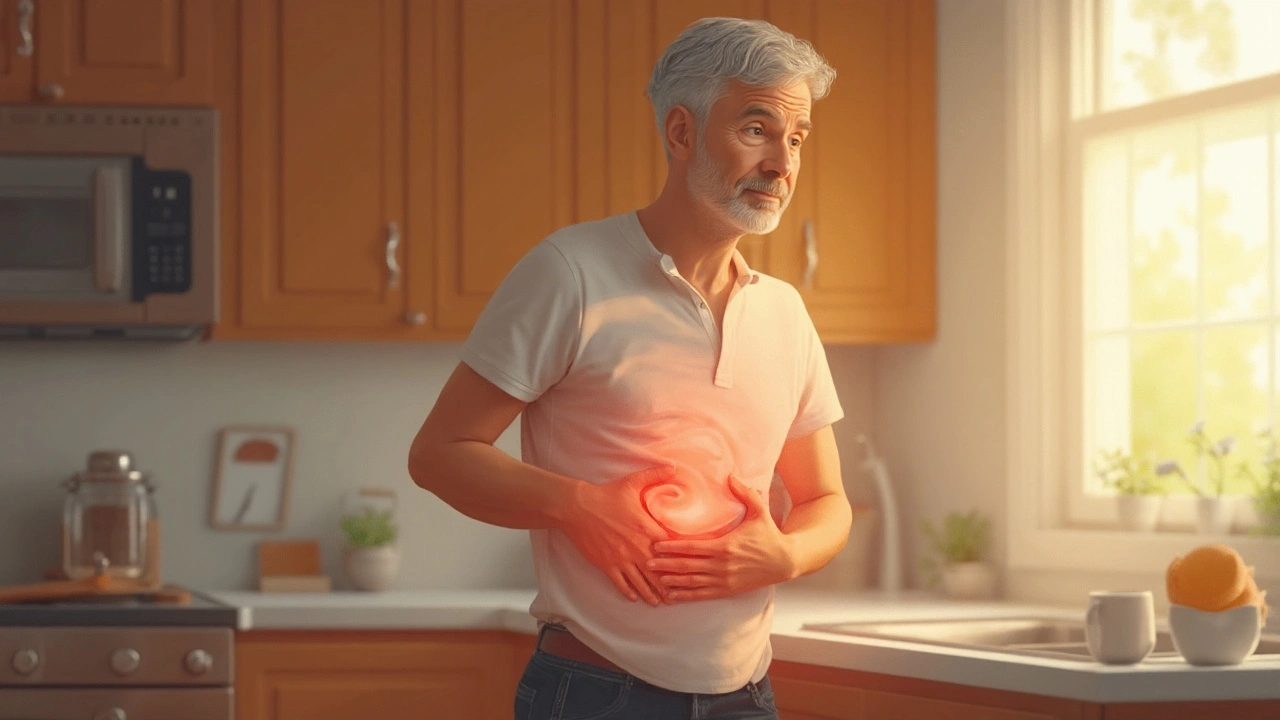Pancreatitis Symptoms – What Your Body Is Trying to Tell You
When dealing with Pancreatitis Symptoms, the warning signals your body sends when the pancreas is inflamed. Also known as pancreatitis signs, they help doctors pinpoint the problem early.
Common related signals include Abdominal Pain, a deep, steady ache that often radiates to the back, Nausea, the uneasy feeling that may lead to vomiting and Unexplained Weight Loss, a sudden drop in body weight without diet changes. These three signals together form a classic triad that doctors use to suspect pancreatitis.
Why These Symptoms Appear – The Body’s Response
Pancreatitis occurs when digestive enzymes start attacking the pancreas instead of food. This enzyme imbalance triggers inflammation, which then produces the pain, nausea and loss of appetite you feel. If the blockage comes from Gallstones, tiny stones that can obstruct the pancreatic duct, the pain often spikes after a fatty meal. Heavy alcohol use works the same way by irritating the pancreatic cells and increasing enzyme leakage. Understanding that enzyme leakage causes inflammation links the root cause directly to the symptoms you notice.
Blood tests that measure amylase and lipase levels are the lab side of the story. Elevated levels confirm that the pancreas is releasing enzymes into the bloodstream, which mirrors the clinical picture of pain and nausea. Imaging studies like ultrasound or CT scans then reveal whether gallstones or swelling are present. In short, the symptom set tells you three things: the pancreas is inflamed, enzymes are misbehaving, and a blockage or toxin may be the trigger.
Knowing when to act is crucial. Persistent upper‑abdominal pain that lasts more than a few hours, especially if it wakes you at night, should prompt a medical call. Add vomiting, fever, or a rapid heartbeat, and you’re looking at a possible severe episode that needs hospital care. Early detection based on symptoms can prevent complications such as fluid collections, infection or chronic pancreatic damage.
Lifestyle changes often blunt the severity of symptoms. Cutting back on alcohol, adopting a low‑fat diet, and staying hydrated help reduce enzyme spikes. For those with gallstone‑related disease, a surgical consultation to remove the gallbladder may be the definitive solution. Even simple steps like eating smaller meals and avoiding spicy foods can lessen the pain episodes.
Below you’ll find a range of articles that dive deeper into each of these areas – from the science behind enzyme activation to practical tips for managing diet and recognizing when a symptom demands urgent care. Use this collection as a roadmap to understand, track, and respond to pancreatitis symptoms effectively.
Chronic Pancreatitis: Causes, Symptoms & Treatment Guide
- DARREN LLOYD
- 13
Learn what chronic pancreatitis is, why it happens, how to spot the warning signs, and which treatment options can protect your pancreas and improve quality of life.
READ MORE
